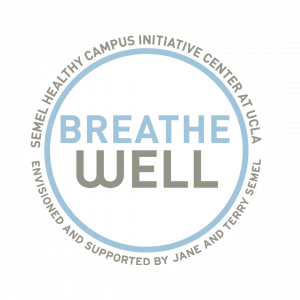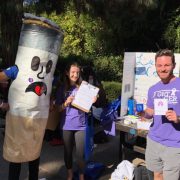Does Seeing Other People Smoke Bother You?
Walking around campus from class to class, seeing other fellow students smoke on campus right under the tobacco-free sign has always bothered me. For their own personal health as well as the well-being of others passing by, I sought to foster a higher level of wellness on our smoke-free campus. Therefore, I strove to increase awareness and compliance of our tobacco and smoke free policy.
When I attended the California Youth Advocacy Network 2019 College Conference earlier this year, several student leaders, faculty, and administrators from various other smoke-free college campuses across California voiced their concerns that policy enforcement is also the number one issue that is preventing their campuses from becoming 100% smoke and tobacco free. A project I have worked on that could address this issue is a “tobacco school” safety course similar to traffic school. This way, the policy could still have teeth, without the pressure of a full citation, and violators could also benefit by educating them about the harmful effects of smoking.
In partnership with the California Youth Advocacy Network (CYAN), I am working with Dr. Michael Ong, co-leader of the BreatheWell Pod for the UCLA Healthy Campus Initiative, to create the “UCLA Tobacco Free Campus BreatheWell Program,” a course that will educate campus violators about the issues of smoking that can substitute a full citation. The process to initiate this program has definitely been quite involved — meeting with key stakeholders, reviewing the materials developed for CYAN for the “tobacco school”, and developing a course workflow — but we are quite fortunate to be able to adapt the approach of the existing “BruinBikeSmart” course, saving valuable time and resources. Personally, I enjoyed CYAN’s learning module, as it was very interactive and engaging, and I believe that this course can appeal to all students and faculty by opening their eyes to quitting smoking. I hope that once this program is successfully launched, UCLA will set a precedent for other UC’s and college campuses, just as it did back in 2013 when it became the first UC smoke-free campus, to implement a similar tobacco school course to promote the health and well-being of other students and faculty.
In addition to my work on this program, I was also able to research the current UCLA smoke-free policy. Surprised to find that UCLA is one of the UC campuses that is not officially marijuana-free, I took the updated 2018 UCOP smoke-free policy that includes specific marijuana-free sections, and adapted these clauses to the existing UCLA smoke-free policy 810 as a proposed revision. After these findings were discussed during the UCLA tobacco-free task force steering committee meeting, I hope that the changes will soon be finalized, approved, and adopted, so that UCLA can become a marijuana-free campus.
Overall I hope that UCLA will become completely smoke, tobacco, and marijuana free in the future, because the health and wellness of our entire campus community should take priority as part of our Healthy Campus Initiative. I aspire that in the near future, we will all have the ability to breathe fresh, clean, smoke-free air throughout the campus. Do you have any proposals on actions that we can take, together as a student body, to promote a healthier and smoke-free campus? Feel free to leave your thoughts and ideas in the comments below.
Richmund Tan is an undergraduate student at UCLA majoring in Microbiology, Immunology, and Molecular Genetics (Class of 2019). In addition to blogging for the UCLA Healthy Campus Initiative and championing for a healthier and more breathable campus for our entire community, he aspires to become a physician to improve patient health, stimulate his intellectual curiosity, and advocate for healthcare policy reform. Outside of school, he is also currently working as a policy researcher for Los Angeles City Councilman Paul Krekorian and volunteering at Cedars-Sinai, hoping to pursue public service leadership at the intersection of government and medicine.

